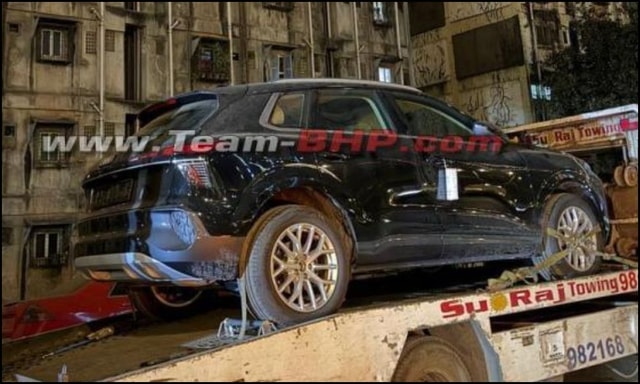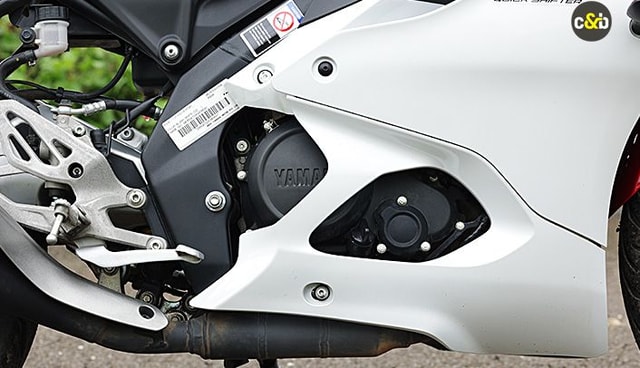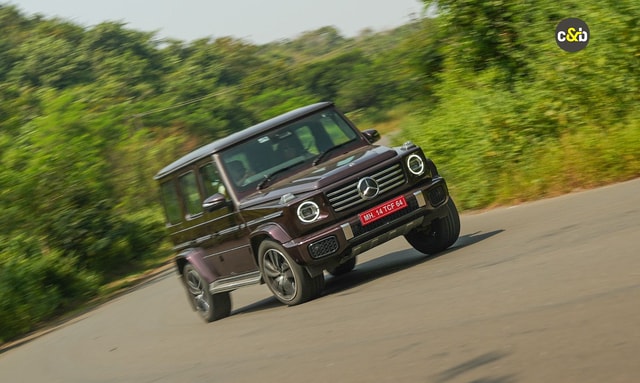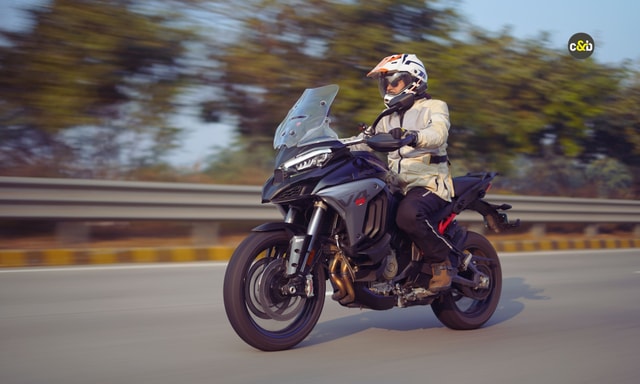Evolution Of Car Body Design From 1910 to Now

Car body designs have changed and becomes more sophisticated with each passing year. Gone are the days when retro cars were the buzz makers. With so much going around in the auto industry, it is essential to look back at how far we have come since Model T first rolled out. Go through this decade-by-decade breakdown of the evolution of car body designs.

Photo Credit: www.shapecut.com.au
The 1910s
Although Europe had seen the occasional combustion engine vehicle tooling arounds its streets in the 1800s itself, it wasn´t until Henry Ford in USA came up with an assembly line process that cars became affordable to a wider section of the society besides the uber rich. Henry Ford´s Model T was the rage in the 1910s and an inspiration for car body design for that era. Roads were bad during that period and most cars produced at that time, including the Model T featured a “runabout” body style with an open carriage, devoid of windows and sometimes even windshields (depending on variant). They were reminiscent of horse-drawn carriages. The chassis was heavy duty, made of vanadium steel and built out of a single unit because as Ford had said at that time, “I wanted a car that could run through anything''. And that included badly built city roads, rough country roads even. A decade later, the Model T was even advertised for its ability to be converted into a tractor.
1910 Ford Model T

Photo Credit: commons.wikimedia.org
The 1920s
The cliché box-like wheelbase and snubbed chassis that dominated the first two decades of the 20th century had now become passe. Customers also wanted a change from Model T, which Ford resolutely continued to sell in only black colour. Roads had improved and the trend was now for closed body carriages with a sleeker design and a compact body. Cars now ran with 8 or 16 cylinder contraptions, which long-nosed bonnets at the front of the car. The runner boards along the sides were more curvy, thus adding elegance to the overall design. And the cars were enamel-coated in vibrant colours, giving an impression of technicolours and gleaming steel. If the 1910s were all about endurance, the 20s was all about design and colour. This period also saw the emergence of large independent carmakers like Packard, Willy-Overland, Hudson and Studebaker.
1923 Duesenberg Model A.

Photo Credit: commons.wikimedia.org
The 1930s
The car designs of the 1930s boasted significant engineering innovation. This era can be credited with the invention of monocoque or single hull cars, which led to lighter, but structurally more sound body that is in use even today. This led to a more cohesive car design where previously distinct features like the fenders, headlights and runner boards became integrated into the main body. Runner boards gradually disappeared as evidenced in the Cadillac 60 special, introduced towards the end of the decade and made famous the teardrop design.
1939 Cadillac Sixty Special

Photo Credit: commons.wikimedia.org
The 1940s
The first half of the 40s saw car production virtually grind to a halt during WW2, as car factories were pressed into service for manufacturing armoured tanks, weapons and fighter planes for the military. Production resumed post-war and the initial models were based on pre-war designs from the thirties. But aluminium was scarce at this time and car makers reverted to making heavy steel bodies again. But all materials were scarce in general. So some of the designs featured scalped elements from war time manufacture like the tail fin of a fighter jet etc. This period also saw the resurrection of the the Ponton styling. This design accommodates fenders, headlights, and runner boards into an uninterrupted form which vastly improved its aerodynamics. Bulbous headlights and bulging hoods gave an almost muscular look to the cars made in the 40s.
1947 Buick Roadmaster

Photo Credit: commons.wikimedia.org
The 1950s
In the 1950s, Europe, still reeling from the after-effects of the war, went the way of compact and economical cars. Models like Volkswagen Beetle, Citroen DS, and Cooper Mini began to take prominence. In contrast, US chose to manufacture brawny cars with chrome widebodies like Chey Corvette and Cadillac Eldorado. During this time, sturdy and swaggering car aesthetics sprang up. Automakers also experimented with off-beat multi-coloured exteriors.
The 1960s
The large, brawny cars of the ´Big Three´ automakers – Chrysler, Ford, and GM were not to everyone´s taste and requirements. And so the 60s saw the American car market get flooded with compact European and functional Japanese cars of Toyota and Nissan that filled this void. The Japanese cars were particularly popular because they were functional, came loaded with features of convenience, easy to drive and economical too. Simultaneously, a new generation of American brawn came into vogue, that of pony cars like the Ford Mustang and Chevy Camaro. These cars paved the way for the muscle car trend that took over the 70s. The auto industry also witnessed the arrival of metallic paint jobs during this time.
1964 Toyota Corona (RT 40)

Photo Credit: commons.wikimedia.org
The 1970s
The 1970s is highly regarded as the muscle car era. The automakers embraced designs similar to the Pontiac Firebird. The buzz makers of this era were sharp edges and hard lines. Parallelly, the Japanese cars grew even more popular due to the gasoline crisis that rocked the 70s. The muscle cars, although great to look at, were not really known for their fuel efficiency.
1974 Pontiac Firebird Trans Am

Photo Credit: commons.wikimedia.org
The 1980s
The 80s weren´t the greatest in terms of car design. The auto industry was still recovering from the after-effects of the gasoline crisis and the design tended to be boxy with harsh lines and underpowered engines – altogether uninspiring. The body colours too underwent a change, from vibrant shades to dull metallic exteriors., The automakers also began to take ergonomics and interior design more seriously.
1982 Ford Thunderbird

Photo Credit: commons.wikimedia.org
The 1990s
Car design in this era paid more attention to the elegant lines of the '30s and '60s and phased out the breadbox sedans and wedge-shaped sports cars. Contours and fluid curves took precedence 1990s as more carmakers tried to improve aerodynamics and reduce wind resistance in order to improve fuel economy and performance. Moreover, they also had stiff competition from the Japanese. The Europeans were already ahead of the Americans on this by a decade because fuel had always been expensive for them. But despite looking back to the 30s and 60s, those bulbous curves never returned. Instead the boxy designs of the 80s got curvier and sleeker, with more emphasis on a design that cleared wind tunnel testing. This, inevitably, set the stage for the modern car design we see today.
1991 Ford Taurus GL Sedan

Photo Credit: commons.wikimedia.org
The 2000s
The cars of 2000 sported a variety of shapes, sizes and forms that are tricky to pin down to a common design trend. New segments exploded and the SUVs gained immense popularity over sedans and hatchbacks. However, the variety in forms and shapes has not translated to variety in colours. The colourful 50s and 60s remain a distant dream. The 2000s decided to stick to their monochromic hues of silver, grey, black, and white.
First generation Hyundai Tucson (2004-09)

Photo Credit: commons.wikimedia.org
Over the decades, the auto industry has witnessed everything from elegant sedans to rogue roadsters. The sporty SUVs and sleek models have taken over the classic tear-drop car design.
Trending News
 1 min readYamaha YZF-R2 Name Trademarked In India
1 min readYamaha YZF-R2 Name Trademarked In India
Latest News
 car&bike Team | Dec 21, 2025KTM To Host First Adventure Rally In India In Feb 2026KTM also announced a third season of its KTM Cup for India, which commences in January 2026.1 min read
car&bike Team | Dec 21, 2025KTM To Host First Adventure Rally In India In Feb 2026KTM also announced a third season of its KTM Cup for India, which commences in January 2026.1 min read car&bike Team | Dec 20, 2025KTM 390 Adventure R To Be Launched In January 2026Bookings for the KTM 390 Adventure R are expected to open very soon, wit deliveries beginning in January 2026.2 mins read
car&bike Team | Dec 20, 2025KTM 390 Adventure R To Be Launched In January 2026Bookings for the KTM 390 Adventure R are expected to open very soon, wit deliveries beginning in January 2026.2 mins read car&bike Team | Dec 20, 2025BMW Motorrad India To Hike Prices By Up To 6 Per Cent From 2026The price hike will come into effect from January 1, 2026, and will be across the range of BMW two-wheelers and is due to the rupee’s sharp depreciation.1 min read
car&bike Team | Dec 20, 2025BMW Motorrad India To Hike Prices By Up To 6 Per Cent From 2026The price hike will come into effect from January 1, 2026, and will be across the range of BMW two-wheelers and is due to the rupee’s sharp depreciation.1 min read car&bike Team | Dec 19, 2025Next-gen Audi Q3 Spied In India Ahead Of Launch In 2026Third-gen Q3 made its global debut in mid-2025, getting notable tech upgrades and electrified powertrain options.2 mins read
car&bike Team | Dec 19, 2025Next-gen Audi Q3 Spied In India Ahead Of Launch In 2026Third-gen Q3 made its global debut in mid-2025, getting notable tech upgrades and electrified powertrain options.2 mins read car&bike Team | Dec 19, 2025Yamaha YZF-R2 Name Trademarked In IndiaThe Yamaha R15, one of Yamaha India’s most popular motorcycle models, is likely to continue, even when the R2 finally makes it debut.1 min read
car&bike Team | Dec 19, 2025Yamaha YZF-R2 Name Trademarked In IndiaThe Yamaha R15, one of Yamaha India’s most popular motorcycle models, is likely to continue, even when the R2 finally makes it debut.1 min read car&bike Team | Dec 18, 2025KTM 160 Duke With TFT Dash launched At Rs 1.79 LakhThe 5-inch colour TFT dash is borrowed from the 390 Duke and is shared across the brand’s sub-400cc lineup.2 mins read
car&bike Team | Dec 18, 2025KTM 160 Duke With TFT Dash launched At Rs 1.79 LakhThe 5-inch colour TFT dash is borrowed from the 390 Duke and is shared across the brand’s sub-400cc lineup.2 mins read
 Bilal Firfiray | Dec 19, 2025Maruti Suzuki e-Vitara Review: Worth The Wait?After a long wait, the first-ever electric Maruti Suzuki is here. It’s the e-Vitara, and it comes with a few promises. But arriving this late, is it worth the wait? Or is it a case of too little, too late?9 mins read
Bilal Firfiray | Dec 19, 2025Maruti Suzuki e-Vitara Review: Worth The Wait?After a long wait, the first-ever electric Maruti Suzuki is here. It’s the e-Vitara, and it comes with a few promises. But arriving this late, is it worth the wait? Or is it a case of too little, too late?9 mins read Bilal Firfiray | Dec 18, 2025Mercedes-Benz G450d: The Subtle Power of EvolutionThe Mercedes-Benz G 450d evolves subtly with more power, improved efficiency, and modern tech, while staying true to the timeless G-Class design. And character.4 mins read
Bilal Firfiray | Dec 18, 2025Mercedes-Benz G450d: The Subtle Power of EvolutionThe Mercedes-Benz G 450d evolves subtly with more power, improved efficiency, and modern tech, while staying true to the timeless G-Class design. And character.4 mins read Janak Sorap | Dec 11, 2025Harley-Davidson X440 T First Ride Review: Smarter and SharperHarley-Davidson has taken the X440 and given it a more focused and engaging twist. The result is the X440 T—essentially the same platform but updated in areas that give the motorcycle more appeal and riders more thrill.5 mins read
Janak Sorap | Dec 11, 2025Harley-Davidson X440 T First Ride Review: Smarter and SharperHarley-Davidson has taken the X440 and given it a more focused and engaging twist. The result is the X440 T—essentially the same platform but updated in areas that give the motorcycle more appeal and riders more thrill.5 mins read Shams Raza Naqvi | Dec 10, 20252025 Mini Cooper Convertible Review: More Colour On Indian RoadsThe updated Mini Cooper Convertible is set to be launched in the Indian market in the next few days. We drive it around Jaisalmer for a quick review.5 mins read
Shams Raza Naqvi | Dec 10, 20252025 Mini Cooper Convertible Review: More Colour On Indian RoadsThe updated Mini Cooper Convertible is set to be launched in the Indian market in the next few days. We drive it around Jaisalmer for a quick review.5 mins read Preetam Bora | Dec 21, 20252025 Ducati Multistrada V4 S Review: Seriously Addictive!For 2025, the Ducati Multistrada V4 gets sharper, smarter and more sophisticated. We spent several days with the updated Multistrada V4 S to answer the big question – with a price tag north of Rs. 30 lakh, is it worth splurging?8 mins read
Preetam Bora | Dec 21, 20252025 Ducati Multistrada V4 S Review: Seriously Addictive!For 2025, the Ducati Multistrada V4 gets sharper, smarter and more sophisticated. We spent several days with the updated Multistrada V4 S to answer the big question – with a price tag north of Rs. 30 lakh, is it worth splurging?8 mins read































































































































